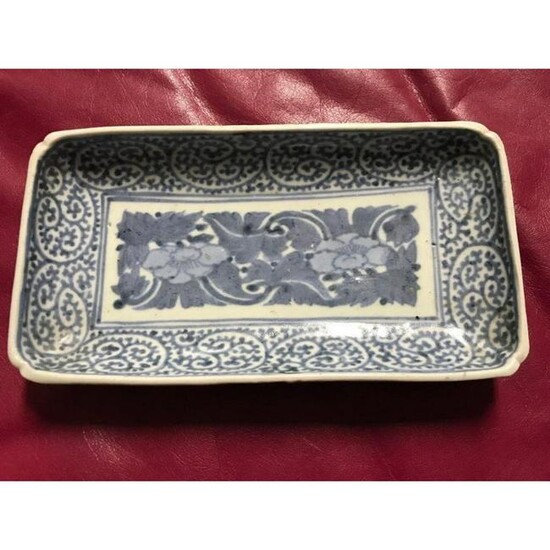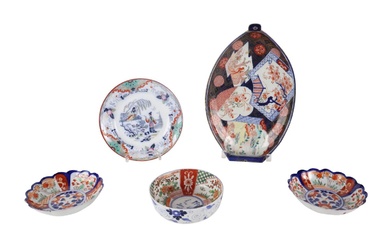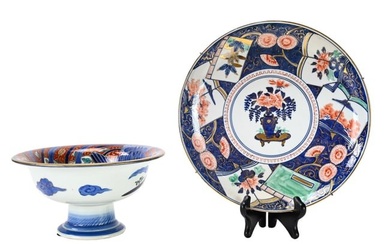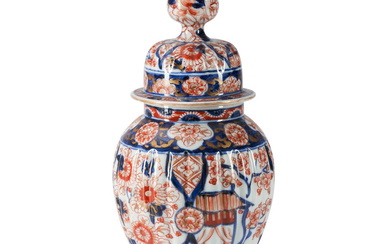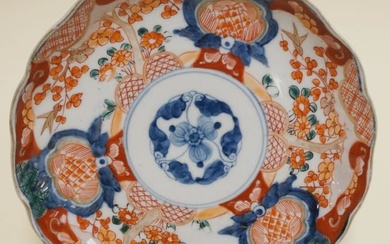Early 19th Century Japanese Imari Porcelain Dish
Antique Japanese Imari Nagazara Tako-Karakusa Porcelain Fuki Choshun Dish. The rectangular form is known as Nagazara. The decoration around the perimeter is called Tako-karakusa, and is resembling octopus legs. The mark on base being 'Fuki Choshun' written in Kanji characters (富貴長春) meaning Wealth, Nobility, Longevity and Youth, also translated as "Good fortune and long life" or "Wealth and Everlasting Spring". *** in very good condition for age, per photos. Porcelain was produced in Arita for the first time in 1616 under the control by the feudal lord of Nabeshima, or the present Saga Prefecture. Arita ware is also called Imari ware because the products of the Arita kiln were mainly shipped from a nearby port of Imari. Arita porcelains of the early days were typically made in the Chinese style of the period, with deep-blue patterns on a white background, called sometsuke = "blue-and-white". In the 1640s, a new style called aka-e" was invented, characterized by bright colors and bold patterns principally in red. These two styles, "sometsuke" and "aka-e," dominate Japanese "Arita/Imari" wares. The products of the 17th and 18th centuries are typically called "Ko-imari" ( old Imari ) and "Ko-sometsuke" (old blue-and-white).
[ translate ]View it on
Estimate
Time, Location
Auction House
Antique Japanese Imari Nagazara Tako-Karakusa Porcelain Fuki Choshun Dish. The rectangular form is known as Nagazara. The decoration around the perimeter is called Tako-karakusa, and is resembling octopus legs. The mark on base being 'Fuki Choshun' written in Kanji characters (富貴長春) meaning Wealth, Nobility, Longevity and Youth, also translated as "Good fortune and long life" or "Wealth and Everlasting Spring". *** in very good condition for age, per photos. Porcelain was produced in Arita for the first time in 1616 under the control by the feudal lord of Nabeshima, or the present Saga Prefecture. Arita ware is also called Imari ware because the products of the Arita kiln were mainly shipped from a nearby port of Imari. Arita porcelains of the early days were typically made in the Chinese style of the period, with deep-blue patterns on a white background, called sometsuke = "blue-and-white". In the 1640s, a new style called aka-e" was invented, characterized by bright colors and bold patterns principally in red. These two styles, "sometsuke" and "aka-e," dominate Japanese "Arita/Imari" wares. The products of the 17th and 18th centuries are typically called "Ko-imari" ( old Imari ) and "Ko-sometsuke" (old blue-and-white).
[ translate ]